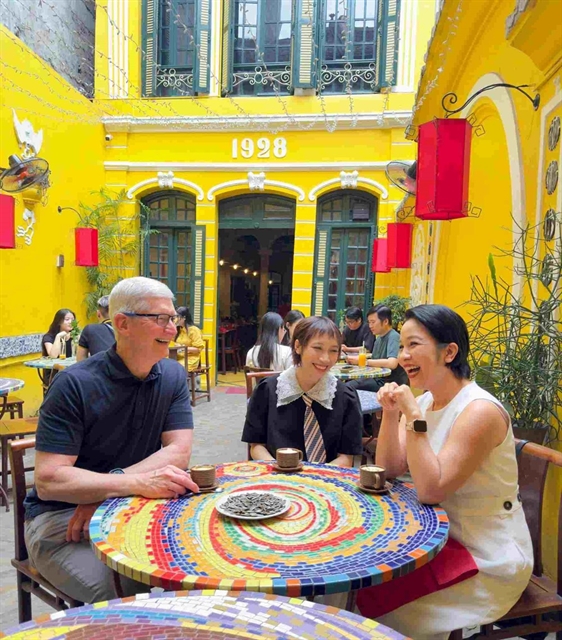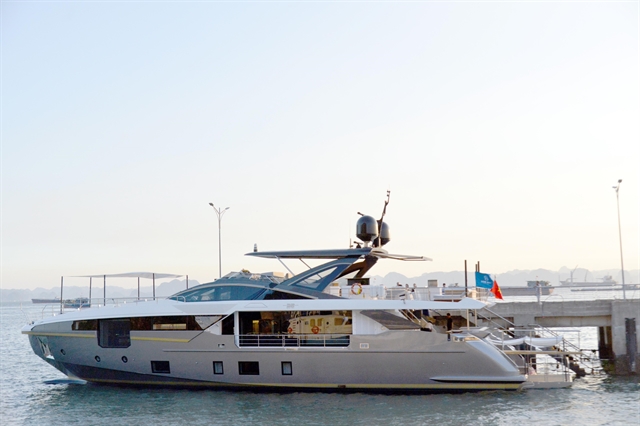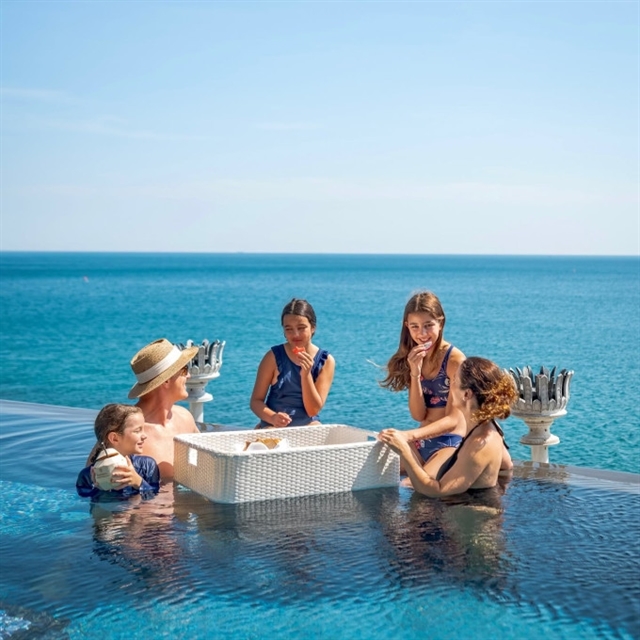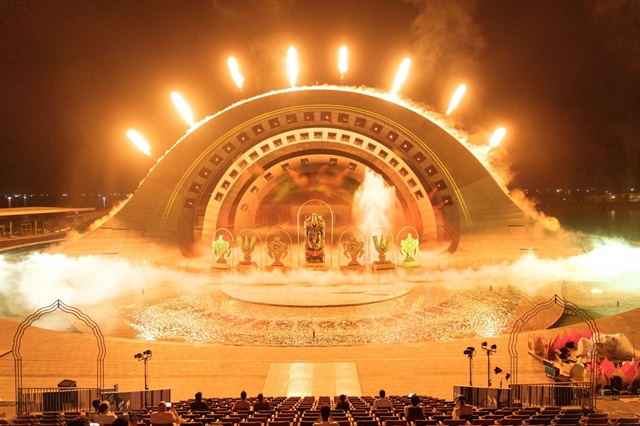Weather:
- Ha Noi 31oC
- Da Nang 28oC
- Ho Chi Minh 27oC

Compiled by Thanh Nga
HÀ NỘI — The influx of billionaires from many countries such as the US and India to Việt Nam is not only a boost to the economy, but is also highlighting the need for enhanced service quality within the tourism sector.
As 2024 unfolds, an increasing number of the world's wealthiest individuals are choosing Việt Nam as their travel destination.
In March, billionaire Bill Gates and his girlfriend spent four days in Đà Nẵng, indulging in tennis and enjoying the luxury of a resort on Sơn Trà peninsula. Later in August, an Indian billionaire brought 4,500 employees to Việt Nam for a corporate trip, personally experiencing the vibrant attractions of Đà Nẵng.
The Sun Hospitality Group (SHG) has reported a surge in visits from businessmen, billionaires and international celebrities to its resorts in Phú Quốc and Đà Nẵng. Notably, the extravagant wedding of that Indian billionaire family took centre stage, further solidifying Việt Nam's appeal among the super-rich.
According to All Asia Vacation (AAV), a travel organiser catering specifically to billionaires and millionaires, Việt Nam is emerging as a trendy destination for this affluent demographic.

AAV CEO Nguyễn Đức Hạnh noted that the company has served about 100 super-rich guests (those with assets exceeding US$30 million) in Việt Nam, marking a 12 per cent increase compared to the previous year and significantly higher than 2019, which was the peak year for Vietnamese tourism. This growth reflects a post-pandemic desire among the super-rich for unique experiences.
Hạnh explained that many renowned destinations have become monotonous for this elite group, while the current instability in Europe has driven them to seek safer, more novel destinations. Việt Nam’s status as a relatively undiscovered tourist destination adds to its allure for these travellers.
Vietravel, which organised the Indian billionaire's trip for 4,500 guests, has also observed a growing appeal of Việt Nam among high-end international tourists. The company has welcomed numerous VIP groups, including billionaires from Southeast Asia, the Middle East, and China, with significant growth noted in recent years.
Director of Vietravel’s Marketing Department, Nguyễn Nguyệt Vân Khanh, indicated that the travel plans of these super-rich individuals often do not gain widespread media attention, due to their preference for privacy. However, the ripple effects of their visits can be felt in business networks and elite circles, fostering opportunities for future high-profile guests. The Indian billionaire's visit, in particular, has helped Việt Nam gain recognition within the Indian business community.
Head of the Event Management Department at the University of Social Sciences and Humanities, Dr Trịnh Lê Anh, emphasised that the arrival of billionaires showcases Việt Nam's competitiveness in the high-end tourism market, which demands stringent service standards. This presents an opportunity for local businesses to promote luxury services, including resort real estate and yachts, while also attracting investment from affluent individuals and their networks.
To further entice wealthy clients, Dr Lê Anh suggested the development of exclusive, secluded resorts in Phú Quốc, Hội An, Ninh Thuận and Quảng Ninh. He advocated for unique experiences such as helicopter tours, private yacht charters and tailored cultural and natural heritage tours. Collaborations with artisans to showcase Vietnamese culture and cuisine can also provide a sophisticated touch to these offerings.
AAV forecasts that Việt Nam has a 'golden window' of about five years to transition from an emerging destination to a preferred stop for the super-rich. Hạnh stressed the importance of sustainable tourism practices, including environmental protection and managing tourist volumes to preserve destination value. Overcrowded locations can deter wealthy guests seeking exclusive experiences.
The model of creating high-end exclusive zones in Hạ Long City has been well-received, and plans for similar developments are underway in Đà Nẵng. Alongside establishing unique destinations for elite visitors, Hạnh highlighted the necessity for infrastructure improvements, including highways, airports and seaports, to facilitate efficient travel and experiences for affluent tourists.
Dieter Buchner, the co-founder of Vietnam Detox, which offers healing experiences for international visitors, emphasised the importance of providing unparalleled experiences. He noted that luxury travelers are increasingly interested in immersing themselves in local culture rather than just enjoying traditional luxury. If they can engage in authentic cultural exchanges, they are willing to invest in exclusive, customised experiences led by local experts.

The benefits of attracting super-rich tourists extend beyond individual businesses. AAV suggests that this group’s visits could lead to new regulations on entrance fees, potentially charging high-end tourists significantly more than average visitors. This revenue could substantially benefit the local economy.
With the rise in wealthy visitors, the demand for high-quality personnel in the tourism sector will inevitably increase. As Hạnh pointed out, Quảng Ninh has proactively addressed this need by partnering with educational institutions to train skilled workers for the high-end tourism market. “Young, talented professionals are essential for the future development of the tourism industry,” he said.
Buchner pointed out that the luxury tourism segment currently faces a shortage of skilled personnel capable of delivering personalised service. Many resort owners focus on aesthetics but neglect the importance of recruiting and developing a competent, long-term workforce. He said: “We need personnel who can resonate emotionally with customers, transforming ordinary vacations into extraordinary experiences.”
Buchner also noted that high-end tourists can significantly benefit local communities. He cited Lác Village in Hòa Bình Province, which has succeeded in developing community-based tourism, providing livelihoods for residents while preserving cultural heritage. This model could be replicated with wealthy international tourists, promising even greater community benefits.

Dr Lê Anh emphasised that attracting super-rich tourists is something that needs to be seen as a strategic direction." While these visitors contribute high value, it is crucial for Việt Nam to maintain its strength in the mass market, which remains the main revenue source, while also expanding the high-end segment.
“We need a balanced strategy that avoids dependency on any single market segment, mitigating risks associated with market fluctuations,” he advised.
Director of the Asian Tourism Development Research Institute, Phạm Hải Quỳnh,echoed the sentiment that enhancing service quality for both high-end and mainstream tourists is vital. A harmonious approach to catering to both groups can elevate the overall standards of Việt Nam's tourism industry, ensuring long-term benefits for the country. VNS


